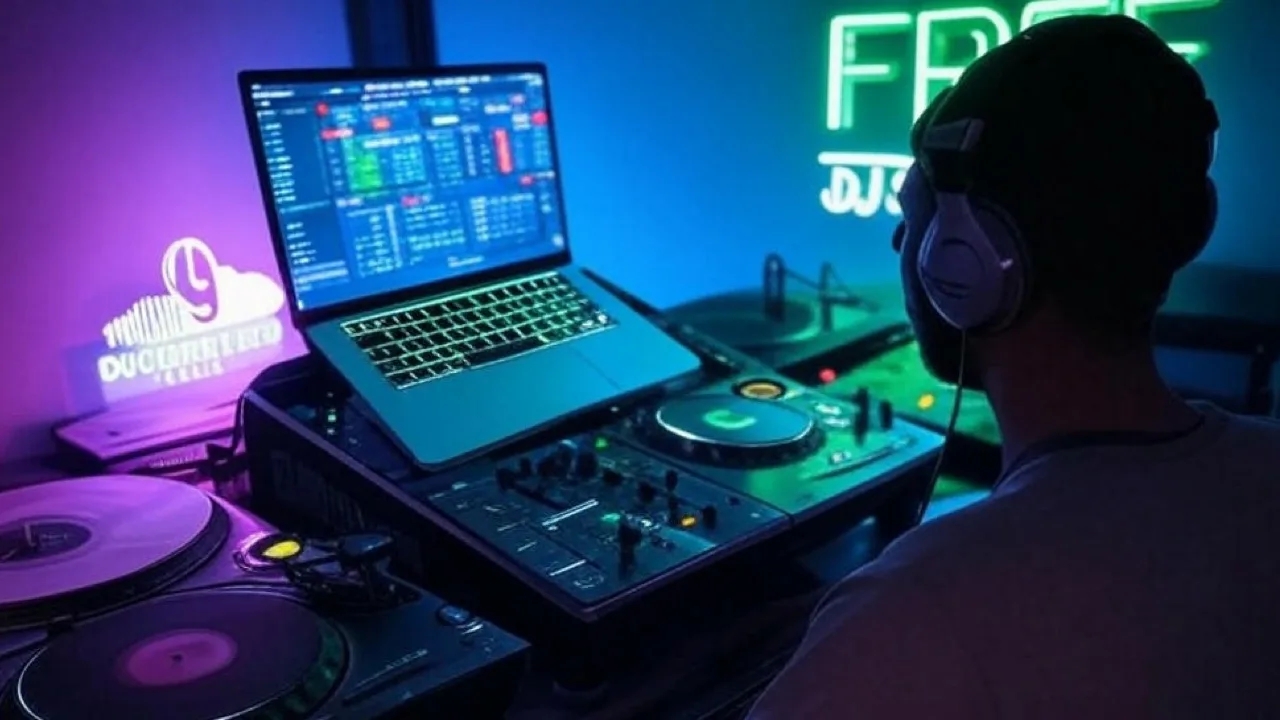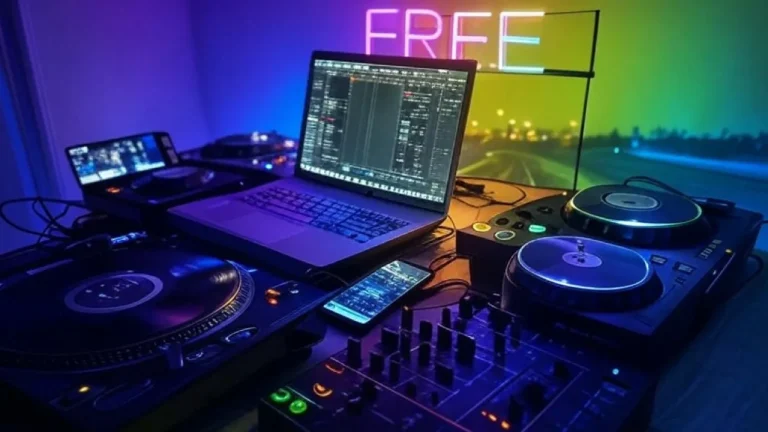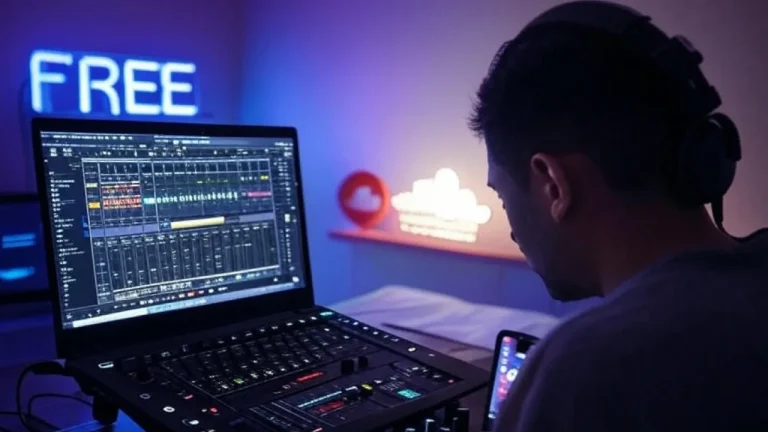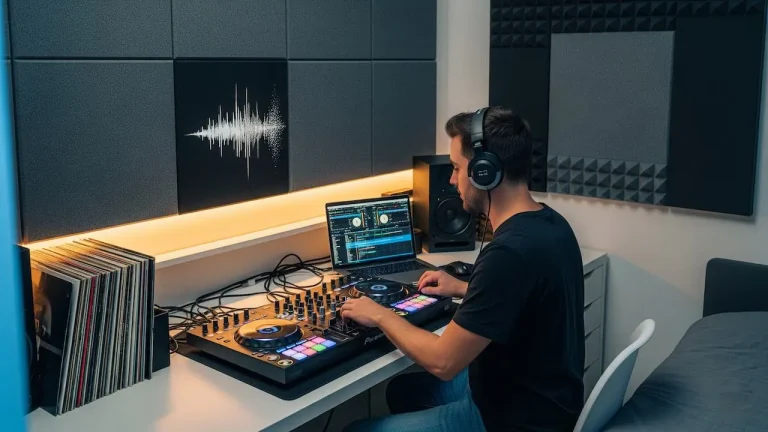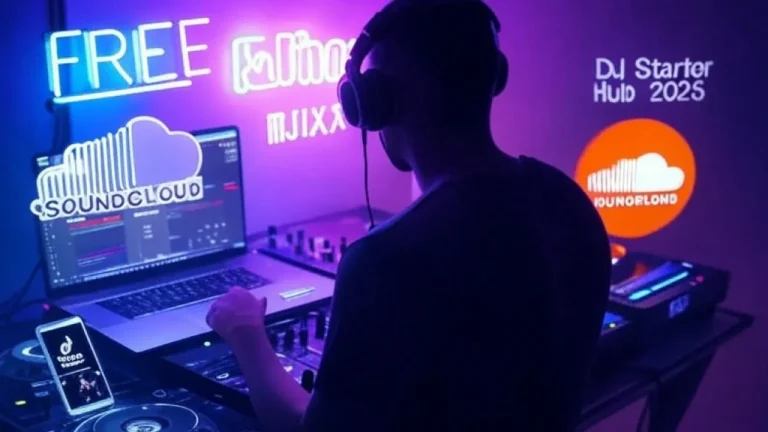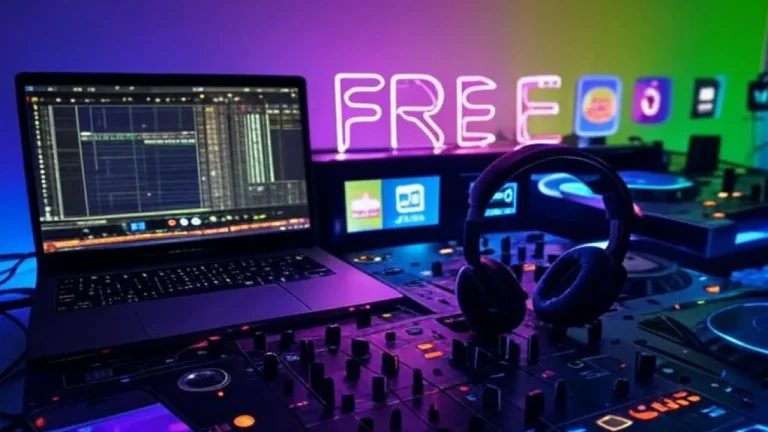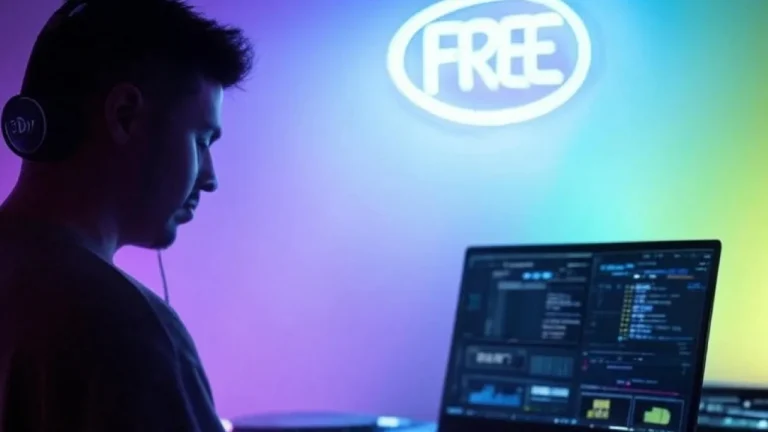Creating your first DJ set roadmap requires building a home practice setup, preparing 60-90 minutes of music, mastering basic mixing skills, and developing a professional performance checklist. Most bedroom DJs need 3-6 months of consistent practice before booking their first paid gig.
Building Your Bedroom DJ Practice Setup
Your bedroom DJ setup forms the foundation for professional performance skills. Start with basic equipment including a laptop, DJ controller, headphones, and monitor speakers. Most bedroom setups cost between $300-800 for quality beginner equipment.
Essential equipment includes a 2-channel DJ controller like the Pioneer DDJ-FLX4 or Hercules DJControl Inpulse 200. Connect your laptop via USB and use DJ software such as Serato DJ Lite, djay, or Virtual DJ. Professional headphones like the Audio-Technica ATH-M50x provide accurate sound monitoring.
| Equipment | Budget Option | Professional Option |
|---|---|---|
| DJ Controller | Hercules DJControl Inpulse 200 ($99) | Pioneer DDJ-FLX6 ($499) |
| Headphones | Sony MDR-7506 ($99) | Sennheiser HD-25 ($199) |
| Monitor Speakers | PreSonus Eris E3.5 ($99) | KRK Rokit 5 G4 ($149 each) |
Essential Skills for Your First DJ Set
Master Basic Beatmatching
Beatmatching synchronizes tempos between two tracks for smooth mixing. Practice matching beats manually before relying on sync buttons. Start with tracks having similar BPMs and gradually work with different tempo ranges.
Use the pitch fader to adjust track speeds while monitoring through headphones. Count beats and match kick drums between tracks. Most DJs spend 2-3 weeks developing consistent beatmatching skills through daily practice sessions.
Learn EQ and Level Control
EQ controls shape frequency content during track mixing. Master the three-band EQ system including bass, mid, and treble controls. Reduce bass frequencies on the incoming track while introducing new elements gradually.
Level faders control track volume during mixing. Start new tracks at zero volume and slowly introduce them while monitoring overall output levels. Professional DJs maintain consistent volume throughout their sets using gain controls and limiters.
Creating Your First DJ Set Structure
Plan Your Track Selection
Successful DJ sets tell musical stories through careful track selection and arrangement. Choose 20-25 tracks for a 60-minute set with varying energy levels and compatible keys. Modern DJs use harmonic mixing principles to match musical keys between tracks.
Organize tracks by energy level, genre, and BPM for smooth programming. Create opening tracks (100-110 BPM), peak time bangers (125-130 BPM), and closing songs (105-120 BPM). Use tools like Mixed In Key or rekordbox for automatic key detection and harmonic compatibility.
Practice Track Order and Flow
Arrange tracks in logical sequences that build and release energy naturally. Start with familiar tracks to build confidence and save experimental songs for mid-set exploration. Record practice sessions to identify weak spots and improve mixing decisions.
Create backup track options for different scenarios. Prepare high-energy alternatives if crowds respond positively and mellower options for quieter moments. Most professional DJs plan 150% more music than their allocated set time.
| Set Section | Duration | BPM Range | Purpose |
|---|---|---|---|
| Opening | 15 minutes | 100-115 BPM | Build atmosphere |
| Build-up | 20 minutes | 115-125 BPM | Increase energy |
| Peak Time | 15 minutes | 125-130 BPM | Maximum energy |
| Cool Down | 10 minutes | 110-120 BPM | Gentle ending |
Recording and Evaluating Your Mix
Recording practice sessions helps identify areas for improvement and builds a portfolio for booking opportunities. Use built-in recording features in DJ software or external recording devices for high-quality audio capture.
Listen to recordings with fresh ears 24 hours after recording. Note timing errors, volume inconsistencies, and track selection mistakes. Create improvement checklists and focus on specific skills during subsequent practice sessions.
Share recordings with experienced DJs or online communities for constructive feedback. Upload mixes to SoundCloud, Mixcloud, or YouTube to build an online presence. Professional DJs use recorded mixes as promotional tools for booking agents and venue owners.
Preparing for Your First Live Performance
Research Venue Requirements
Contact venues directly to understand technical requirements and performance expectations. Ask about sound systems, available equipment, and setup time allocations. Most venues provide CDJs, mixers, and sound systems but expect DJs to bring personal controllers and music libraries.
Prepare multiple music formats including USB drives, streaming service access, and backup digital files. Test all equipment combinations before performance dates. Professional DJs carry backup USB drives, headphones, and essential cables to every gig.
Create Your Performance Checklist
Develop systematic preparation routines for consistent performance quality. Practice error recovery techniques and backup plans for technical difficulties. Most first-time DJs experience equipment issues or unexpected crowd reactions.
Essential items include backup music libraries, extra headphones, power cables, audio cables, and personal business cards. Arrive 30-60 minutes early for setup and sound checks. Professional DJs always test all equipment before guest arrival.
Finding Your First DJ Gig Opportunities
Start with Friends and Family Events
Private parties, birthday celebrations, and small gatherings provide low-pressure performance opportunities. Offer services to friends and family at reduced rates to gain experience and build references.
Document successful performances through photos, videos, and testimonials. Create social media profiles showcasing your DJ brand and personality. Word-of-mouth referrals from satisfied clients often lead to paid booking opportunities.
Approach Local Venues
Research bars, restaurants, and small clubs that host regular DJ nights. Visit venues during slow periods to meet managers and booking coordinators. Prepare professional demo mixes and business cards for initial meetings.
Start with open deck nights, resident DJ competitions, or fill-in opportunities during cancellations. Many venues prefer local DJs who understand their clientele and musical preferences. Building relationships with venue staff often leads to regular booking opportunities.
Developing Your Unique DJ Style
Professional DJs distinguish themselves through signature sounds, mixing techniques, and performance personalities. Experiment with different genres and mixing styles during bedroom practice sessions. Identify musical preferences and technical strengths that set you apart from other DJs.
Study successful DJs in your preferred genres through live streams, recorded sets, and social media content. Analyze their track selection, mixing techniques, and crowd interaction methods. Adapt successful strategies while maintaining personal authenticity and creative expression.
People Also Ask
Most bedroom DJs need 3-6 months of consistent practice before feeling confident for live performances. Daily practice sessions of 1-2 hours help develop muscle memory and improve mixing consistency. Focus on mastering 15-20 tracks perfectly rather than learning hundreds of songs superficially.
Basic bedroom setups require a laptop, DJ controller, headphones, and monitor speakers. Entry-level controllers like the Pioneer DDJ-FLX4 provide professional features at affordable prices. Budget approximately $400-600 for complete beginner setups including software and accessories.
Prepare 20-25 tracks for a 60-minute set with additional backup options. Most tracks play for 2-4 minutes during mixing depending on genre and mixing style. Professional DJs typically prepare 150% more music than their allocated performance time.
Learn manual beatmatching first to develop essential DJ skills and musical understanding. Practice matching beats by ear before relying on automatic sync features. Professional DJs use sync as a tool while maintaining manual beatmatching abilities for backup situations.
Frequently Asked Questions
House, pop, and hip-hop genres provide consistent beat patterns that simplify mixing for beginners. These genres have predictable structures and familiar tracks that help build confidence. Start with one genre before expanding to multiple styles.
Maintain composure and quickly correct errors without drawing attention to problems. Use crossfader cuts, EQ adjustments, or air horn effects to mask mixing mistakes. Most audiences never notice minor errors when DJs remain confident and continue performing.
Entry-level equipment produces professional results when used skillfully. Focus on mastering basic techniques before upgrading to premium gear. Many successful DJs started with budget controllers and developed skills through consistent practice.
Record practice sessions and perform for friends before booking public gigs. Master fundamental techniques through repetition and muscle memory development. Confidence builds naturally through successful experiences and positive audience feedback.
Research local market rates and start with competitive pricing for experience building. Many first-time DJs charge $50-150 for private parties and $100-300 for venue performances. Understand legal requirements and licensing before accepting paid bookings.
Social media platforms provide essential marketing and networking opportunities for modern DJs. Share practice videos, mix recordings, and performance highlights to build online presence. Consistent content creation helps attract booking opportunities and fan development.
